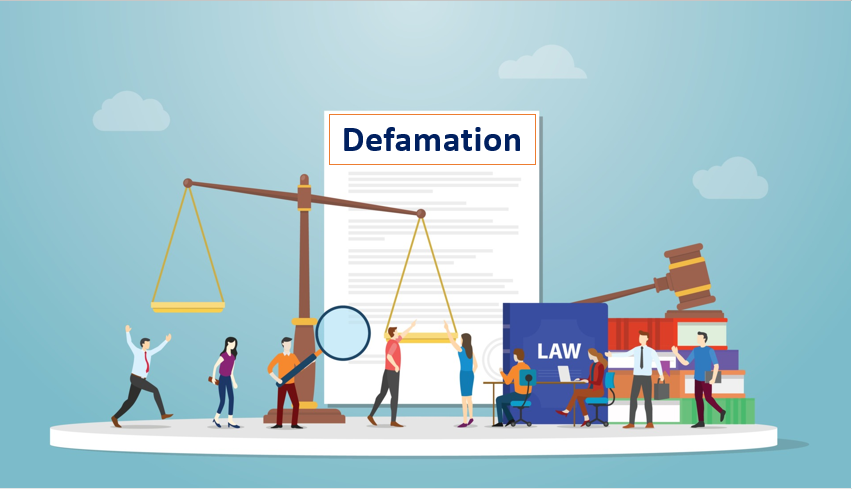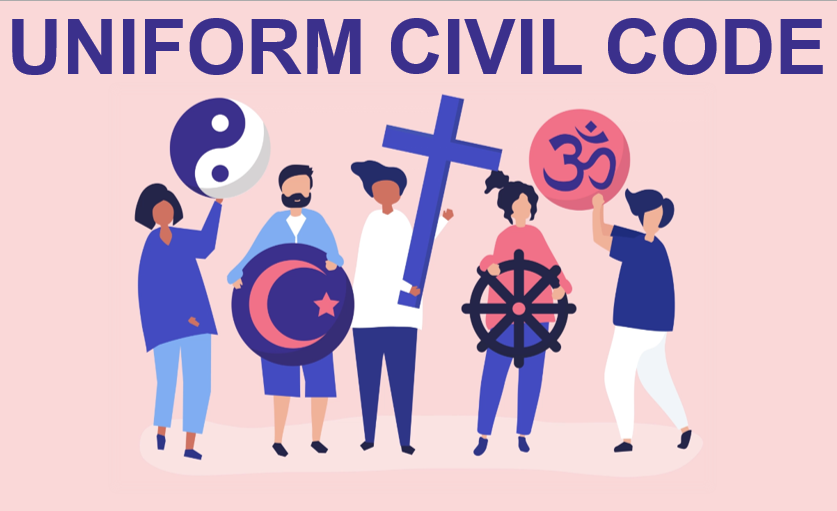Published on 07th May 2025
Authored By: Drishti Singh
Shri Chintamani Smarak Vidhi Mahavidyalaya Pratapgarh, Uttar Pradesh
Introduction
Experts in labor law have frequently emphasized that workplace discrimination is a pervasive issue that challenges the ideals of equality, fairness and justice in professional environments. Analysts believe it encompasses any biased or unfavorable treatment of employees based on inherent characteristics such as gender, caste, religion, race, disability, age or sexual orientation. Despite the existence of various legal frameworks to counter such practices, researchers have observed that discrimination remains prevalent in different forms, affecting the dignity, morale and productivity of employees. It has been noted that India’s legal system, though comprehensive, faces significant challenges in implementing effective protection for employees, prompting experts to call for a more nuanced and reinforced approach to tackling workplace discrimination.
Understanding Workplace Discrimination
It has been widely noted by sociologists and human rights activists that workplace discrimination can manifest in numerous forms, ranging from overt acts of harassment to subtle biases embedded in organizational practices. Reports have suggested that discriminatory practices can be both direct and indirect. Direct discrimination is described as explicit, unfair treatment meted out to individuals based on their identity, while indirect discrimination occurs when seemingly neutral policies disproportionately affect certain groups. Researchers have observed that due to the fear of retaliation, lack of awareness about legal rights, and inadequacies in redressal mechanisms, many instances of discrimination remain unreported. Psychological studies have indicated that the consequences of such discrimination often extend beyond the professional sphere, adversely affecting an individual’s mental health, self-esteem, financial stability and overall well-being.
Labor experts have highlighted that discrimination can take various forms, including hiring bias, wage disparities, restricted access to promotions, verbal and physical harassment and the creation of a hostile work environment. It has been pointed out that women, persons with disabilities, members of the LGBTQIA+ community and individuals belonging to marginalized castes often face systemic discrimination. Surveys conducted by non-governmental organizations have consistently reported that a significant percentage of employees experience some form of discrimination during their professional lives, yet only a fraction file formal complaints. Analysts argue that this disparity between occurrence and reporting suggests a deep-seated mistrust in the effectiveness of grievance redressal mechanisms.
Legal Framework Addressing Workplace Discrimination in India
It has been acknowledged by legal scholars that India’s legal framework addressing workplace discrimination is intricate and draws its strength from constitutional provisions, specific legislation, and judicial interpretations. The Constitution of India is recognized as the primary source of anti-discrimination laws, serving as the guiding principle for all subsequent legislation.
- Constitutional Provisions
It has been observed that the Constitution of India lays the groundwork for ensuring equality and protection against discrimination. Legal analysts interpret Article 14, which guarantees equality before the law, as a commitment to equal treatment without arbitrary distinctions. Article 15 explicitly prohibits discrimination based on religion, race, caste, sex or place of birth. Additionally, Article 16 guarantees equal opportunities in public employment, emphasizing non-discrimination in matters of recruitment and employment in state services. Scholars have noted that these constitutional provisions collectively reflect India’s dedication to establishing a society based on equality and social justice.
- The Equal Remuneration Act, 1976
Labor law experts have commented that the Equal Remuneration Act was enacted to combat wage disparities between men and women, ensuring equal pay for equal work. However, researchers have reported that the Act has had limited success due to inadequate enforcement mechanisms and insufficient awareness among employees. Despite legal provisions, surveys have indicated that wage disparities continue to persist, particularly in the unorganized sector, where employees lack formal contracts and bargaining power. Critics believe that the absence of stringent penalties for non-compliance further undermines the effectiveness of this legislation.
- The Sexual Harassment of Women at Workplace (Prevention, Prohibition and Redressal) Act, 2013
Commonly known as the POSH Act, this legislation is viewed as a significant step toward safeguarding women against sexual harassment at the workplace. Legal professionals have pointed out that the Act mandates the formation of an Internal Complaints Committee (ICC) in organizations with ten or more employees, enabling confidential grievance redressal. However, studies have suggested that underreporting remains a critical challenge, primarily due to the fear of victim-blaming, stigma and inadequate training of ICC members. Analysts argue that many organizations do not constitute ICCs or comply with the procedural requirements of the Act, diminishing its effectiveness.
- The Rights of Persons with Disabilities Act, 2016
Human rights activists have described the Rights of Persons with Disabilities Act as a progressive step aimed at preventing discrimination against individuals with disabilities. The Act promotes equality in employment and mandates reasonable accommodation to ensure accessibility. It has been highlighted that the Act aligns with the principles of the United Nations Convention on the Rights of Persons with Disabilities (UNCRPD), to which India is a signatory. Nevertheless, research has shown that infrastructural barriers, societal prejudice and a lack of sensitivity among employers continue to impede the full realization of the Act’s objectives.
- The Transgender Persons (Protection of Rights) Act, 2019
This legislation was enacted to protect the rights of transgender persons and prevent discrimination in employment. However, transgender rights activists have reported that societal stigma, lack of awareness about the Act and inadequate implementation have limited its practical success. Many employers, it has been suggested, fail to adopt inclusive policies, contributing to the continued marginalization of transgender employees in the workforce.
- The Industrial Disputes Act, 1947
The Industrial Disputes Act is viewed as a measure to address issues of unfair dismissal and wrongful termination. Labor experts have noted that the Act prohibits discrimination against workers for their association with trade unions or participation in lawful strikes. However, the increasing trend of contractual employment and informal work relationships has reportedly reduced the protective reach of this legislation.
Judicial Interpretation and Role in Strengthening Employee Rights
Judges and legal scholars believe that the Indian judiciary has played a pivotal role in interpreting anti-discrimination laws and expanding the scope of employee rights through landmark judgments. Courts in India are seen as having adopted a progressive approach to workplace discrimination, recognizing issues of gender equality, inclusivity and social justice.
- Vishaka v. State of Rajasthan (1997):
This landmark judgment, according to analysts, laid the foundation for the POSH Act, 2013. The Hon’ble Supreme Court, it is believed, established guidelines for preventing sexual harassment at workplaces, interpreting such harassment as a violation of fundamental rights under Articles 14, 15, and 21.
- Air India v. Nargesh Meerza (1981):
It has been observed that the Hon’ble Supreme Court, in this case, struck down discriminatory service rules that allowed the termination of female flight attendants upon pregnancy. The Court reportedly criticized gender-based stereotypes, asserting that such practices violate constitutional rights.
- National Legal Services Authority (NALSA) v. Union of India (2014):
Experts have noted that this judgment marked a significant step in recognizing the rights of transgender persons as a “third gender.” The decision was seen as a crucial step toward the protection and empowerment of the transgender community.
- Jeeja Ghosh v. Union of India (2016):
In this case, the Hon’ble Supreme Court upheld the rights of persons with disabilities, emphasizing the need for inclusivity and sensitivity in workplaces. The judgment has been described as reinforcing the principles of the Rights of Persons with Disabilities Act, 2016.
Judges and legal scholars have expressed the view that the Indian judiciary has significantly influenced the interpretation of anti-discrimination laws, expanding employee rights through landmark judgments. It has been observed that courts in India generally adopt a progressive approach, focusing on gender equality, inclusivity, and social justice. Analysts have noted that in Vishaka v. State of Rajasthan (1997), the Hon’ble Supreme Court established guidelines to prevent sexual harassment at workplaces, which later served as the foundation for the POSH Act, 2013. The Court reportedly considered such harassment a violation of Articles 14, 15 and 21 of the Constitution. In Air India v. Nargesh Meerza (1981), the Hon’ble Supreme Court is said to have struck down discriminatory service rules that allowed the termination of female flight attendants upon pregnancy, criticizing gender-based stereotypes as unconstitutional. Experts have remarked that the decision in National Legal Services Authority (NALSA) v. Union of India (2014) marked a significant step in recognizing transgender individuals as a “third gender” and advancing their rights. Additionally, it has been observed that the judgment in Jeeja Ghosh v. Union of India (2016) reinforced the rights of persons with disabilities, emphasizing the importance of inclusivity and aligning with the principles of the Rights of Persons with Disabilities Act, 2016. These judgments are believed to collectively reflect the judiciary’s role in addressing workplace discrimination and broadening the scope of employee rights in India.
Challenges in Addressing Workplace Discrimination
Labor rights advocates have consistently highlighted the numerous challenges in effectively addressing workplace discrimination, even with a comprehensive legal framework.
- Lack of Awareness:
Experts believe that a significant portion of the workforce remains unaware of their legal rights, resulting in underreporting of discrimination cases. Studies conducted by human rights organizations have revealed that many employees do not fully understand the processes involved in filing complaints, particularly in rural and informal sectors.
- Cultural Norms and Prejudices:
Sociologists have observed that India’s deep-rooted social biases and traditional mindsets perpetuate discriminatory attitudes. Cultural norms, often reinforcing patriarchal beliefs, hinder the equitable treatment of marginalized groups. Legal commentators argue that changing societal perceptions requires more than just legislative intervention.
- Inadequate Enforcement Mechanisms:
Analysts have criticized the ineffective enforcement of anti-discrimination laws, pointing out that many organizations do not implement required grievance redressal mechanisms. Researchers have found that some Internal Complaints Committees (ICCs) under the POSH Act are non-functional or lack adequate training.
- Informal and Unorganized Sector:
Labor experts assert that workers in the informal sector face heightened vulnerabilities due to the absence of formal contracts and limited access to legal protections. It has been noted that these sectors constitute a significant portion of India’s workforce, rendering a substantial number of employees outside the protective scope of existing laws.
- Intersectionality:
Scholars believe that the existing legal framework does not adequately address the complexities of multiple and intersecting forms of discrimination. For instance, women from marginalized castes or persons with disabilities from minority communities often experience layered discrimination.
- Fear of Retaliation:
It has been observed that fear of retaliation, job loss, and victim-blaming deter employees from seeking redress. Analysts have suggested that the lack of witness protection and inadequate anonymity provisions further discourage victims from coming forward.
Global Perspective and Comparative Analysis
Experts have often compared India’s approach to combating workplace discrimination with that of other countries, analyzing differences in implementation, scope, and effectiveness.
- United States:
It has been noted that the Equal Employment Opportunity Commission (EEOC) plays a pivotal role in enforcing federal anti-discrimination laws in the U.S. Labor law scholars believe that the EEOC’s proactive measures, such as outreach programs, rigorous investigations, and stringent penalties, serve as a model for effective enforcement.
- United Kingdom:
The Equality Act, 2010, is seen as a comprehensive legal framework that addresses discrimination based on multiple characteristics, including race, sex, disability, and religion. Analysts have noted that the Act’s focus on “positive action” to encourage diversity is a progressive approach that could be explored in the Indian context.
- South Africa:
Observers have commended South Africa’s policies promoting affirmative action to address historical injustices caused by apartheid. The Employment Equity Act has been acknowledged for its proactive stance on achieving workplace equality.
It has been suggested by comparative law experts that India’s approach could benefit from integrating aspects of these international practices, particularly in terms of stronger enforcement mechanisms, comprehensive training and increased awareness campaigns.
Experts have frequently compared India’s approach to combating workplace discrimination with that of countries like the United States, the United Kingdom and South Africa, while analyzing differences in implementation, scope and effectiveness. It has been observed that the Equal Employment Opportunity Commission (EEOC) in the U.S. is considered to play a crucial role in enforcing federal anti-discrimination laws through proactive outreach, investigations and strict penalties, which are believed to serve as a model for effective enforcement. Analysts have remarked that the Equality Act, 2010 in the United Kingdom is regarded as a comprehensive framework addressing discrimination based on race, sex, disability and religion, with its emphasis on “positive action” to promote diversity being viewed as a progressive measure. It has been noted by observers that South Africa’s Employment Equity Act, designed to address historical injustices from apartheid, is often praised for actively promoting workplace equality. Comparative law experts have suggested that India’s approach could be strengthened by adopting aspects of these international practices, including stronger enforcement mechanisms, comprehensive training, and increased awareness initiatives.
Recommendations for Strengthening Legal Framework and Enforcement
Legal scholars, labor experts and human rights activists have proposed several recommendations to address the existing gaps and enhance the effectiveness of India’s anti-discrimination framework.
- Strengthening Enforcement Mechanisms:
Experts argue for stricter monitoring of compliance with anti-discrimination laws and more rigorous inspection of Internal Complaints Committees. It has been recommended that penalties for non-compliance be increased to ensure accountability.
- Expanding Coverage:
It has been suggested that extending legal protections to workers in the informal and gig economy is crucial. Scholars believe that this expansion would safeguard a significant portion of the workforce currently excluded from formal labor protections.
- Comprehensive Awareness Campaigns:
Human rights organizations have emphasized the need for large-scale awareness campaigns to educate employees about their rights. Legal aid clinics and workshops, particularly in rural and marginalized communities, could bridge the knowledge gap.
- Intersectional Approach:
Analysts have proposed an intersectional approach to anti-discrimination laws, addressing multiple, overlapping grounds of discrimination. Specific guidelines could be developed to tackle discrimination faced by individuals at the intersection of caste, gender, disability, and economic status.
- Encouraging Diversity and Inclusion:
It has been noted that creating inclusive workplaces through diversity training, sensitivity programs, and inclusive policies can help reduce workplace discrimination. Researchers have suggested that mandatory diversity audits and periodic assessments of organizational practices could promote inclusivity.
- Strengthening Grievance Redressal Mechanisms:
Experts believe that grievance redressal mechanisms must be made more accessible, confidential, and supportive. Training ICC members to handle complaints sensitively and protecting whistleblowers from retaliation are seen as necessary reforms.
Conclusion
It has been widely acknowledged by labor rights activists, legal professionals and policymakers that while India’s legal framework for combating workplace discrimination is robust in principle, the practical challenges in implementation are significant. Experts have emphasized that achieving a discrimination-free work environment requires collective efforts from the government, employers and civil society. Strengthening enforcement mechanisms, expanding legal protections to the informal sector, enhancing awareness and fostering a culture of inclusion are vital to addressing the deep-seated issues of workplace discrimination.
Analysts argue that if India’s legal framework is bolstered with these reforms, the country can progress toward a more equitable, just and inclusive work environment. Legal commentators have suggested that such a transformation would not only protect employees’ rights but also enhance productivity, employee satisfaction and organizational growth. By embracing an inclusive approach, it is believed that workplaces can become spaces that celebrate diversity, respect individuality and uphold the dignity of every employee.
References
- Constitution of India, 1950, Articles 14, 15 and 16.
- The Equal Remuneration Act, 1976, Government of India.
- The Sexual Harassment of Women at Workplace (Prevention, Prohibition and Redressal) Act, 2013 (POSH Act).
- The Rights of Persons with Disabilities Act, 2016, Government of India.
- The Transgender Persons (Protection of Rights) Act, 2019, Government of India.
- The Industrial Disputes Act, 1947, Government of India.
- Vishaka v. State of Rajasthan, AIR 1997 SC 3011.
- Air India v. Nargesh Meerza, AIR 1981 SC 1829.
- National Legal Services Authority v. Union of India, (2014) 5 SCC 438.
- Jeeja Ghosh v. Union of India, (2016) 7 SCC 761.
- The United Nations Convention on the Rights of Persons with Disabilities(UNCRPD), 2006.
- Equal Employment Opportunity Commission (EEOC), USA— Official Website and Reports.
- Equality Act, 2010, United Kingdom.
- Employment Equity Act, 1998, South Africa.
- Reports from International Labour Organization (ILO) on workplace discrimination.
- Research articles from journals like the Journal of Labor Research, Indian Journal of Industrial Relations and Economic and Political Weekly.


